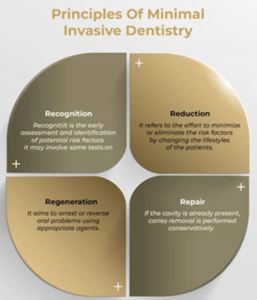

Minimally Invasive Dental Procedures
These are nothing but the gum procedures that are performed by a special kit of the instruments that are miniature in size. Minimally invasive dental procedures have revolutionized the way dentists approach oral care. These techniques prioritize patient comfort, reduce recovery time, and preserve as much natural tooth structure as possible. In this article, we’ll explore the benefits and applications of minimally invasive dental procedures.
That’s why the incisions that are made are smaller; hence, the wound is smaller, and eventually the postoperative discomfort is nominal.
We continue to maintain the same approach when it comes to the restoration of lost tooth structure.
We like to preserve the tooth as much as possible.
We only remove the infected portion of the tooth and replace the missing portion of the tooth without being aggressive about tooth preparation for the reception of the restorations.
- Reduced pain and discomfort: Minimally invasive procedures often require less anesthesia and result in less post-operative pain.
- Preservation of tooth structure: These procedures aim to remove only the damaged or decayed portion of the tooth, preserving as much natural structure as possible.
- Faster recovery time: Minimally invasive procedures typically require less recovery time, allowing patients to return to their normal activities sooner.
- Improved aesthetics: This procedure can help preserve the natural appearance of the tooth and surrounding tissues.
Applications of Minimally Invasive Dental procedures
- Cavity preparation: Minimally invasive techniques, such as air abrasion and laser dentistry, can be used to prepare cavities for fillings.
- Gum disease treatment: Minimally invasive procedures, such as scaling and root planing, can be used to treat gum disease.
- Dental implant placement: Minimally invasive techniques, such as flapless implant placement, can be used to place dental implants.
Technologies used in Minimally Invasive Dental Procedures
- Lasers: Dental lasers can be used for cavity preparation, tooth whitening, and gum disease treatment.
- Air abrasion: Air abrasion technology uses a stream of compressed air to remove decay and prepare cavities.
- Digital imaging: Digital imaging technologies, such as cone beam computed tomography (CBCT), can be used to plan and guide minimally invasive procedures.
Conclusion